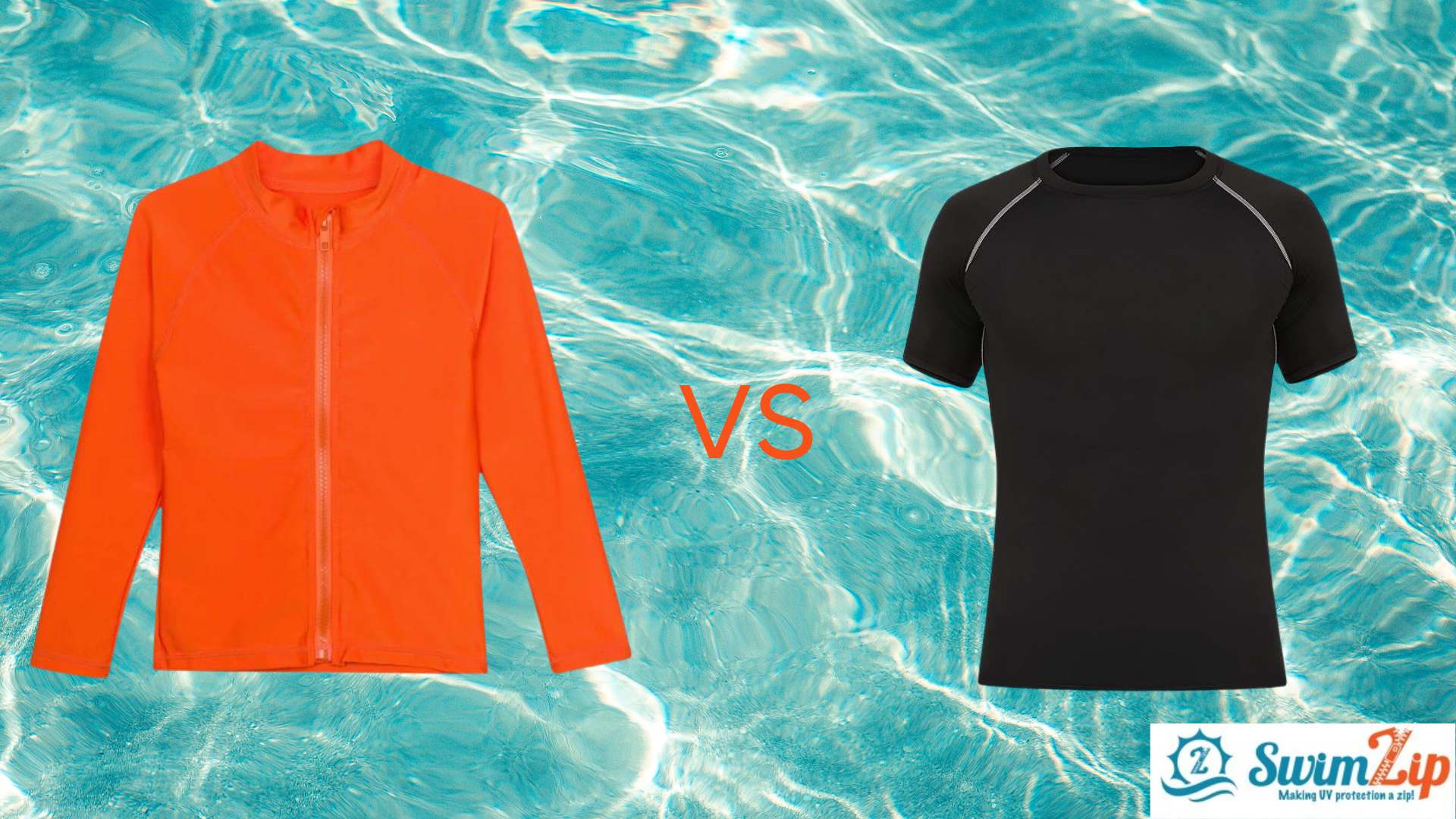
How to stretch out bikini bottoms
Tight bikini bottoms can spoil your beach experience. They dig into your skin, create unflattering bulges, and leave you constantly adjusting instead of enjoying the waves. But you don't need to resign yourself to discomfort or buy a new suit. With the right techniques, you can stretch out those too-tight bottoms and reclaim your beach confidence.
We'll walk you through six effective methods to stretch your bikini bottoms, plus share tips on caring for different fabric types.
Quick links:
Common problems with bikini bottoms
Check out our fantastic collection of women’s bikini bottoms. All our sun-protective swimwear is made of high-quality and durable UV-protective fabric with UPF 50+ for ultimate comfort and sun protection.
Common problems with bikini bottoms
Bikini bottom fabric may shrink or lose elasticity after repeated use, resulting in one of these uncomfortable problems:
- Tight leg openings can dig into your skin.
- A constricting waistband might create unflattering bulges.
- Ill-fitting bikini bottoms may expose more than intended or bunch up awkwardly.
- Your bottoms might also sit too low or high on your hips, creating unflattering contours or exposing more than you’d like.
If you're dealing with any of these issues, don't despair. You can try some of these common methods to stretch out bikini bottoms for a better fit.
Warm water soak method
Begin by filling a sink or basin with warm water. Submerge your stretched-out bikini bottoms completely and let them soak for about 30 minutes. This warm soak helps relax the fabric fibers. After soaking, remove the bottoms and gently squeeze out excess water without wringing.
While the bottoms are still damp, put them on. Wear them for about an hour, moving around naturally. As you move, the warm, relaxed fabric will stretch and mold to your body. This way bikini bottoms will adapt to your unique contours.
Once the hour is up, remove the bottoms and lay them flat to air dry. As they dry, the fabric will retain its new, more comfortable shape, providing you with a better-fitting swimsuit.
Manual stretch technique
Start by soaking the bottoms in cool water for about 10 minutes to relax the swimsuit fibers.
After soaking, gently squeeze out excess water without wringing. Lay the bottoms flat on a clean towel. Using your hands, carefully stretch the fabric in all directions, focusing on areas that feel tight, such as the leg holes or waistband. Be gentle to avoid damaging the delicate swimsuit fabric.
Once you've finished stretching, reshape the bottoms to their original shape and lay them flat to air dry. This method will achieve a more flattering fit without risking damage from excessive heat or harsh treatments.
Spray and stretch treatment
Fill a spray bottle with lukewarm water. Add a small amount of mild detergent and shake gently to mix. The detergent helps loosen the fabric fibers and makes them more pliable. Lay your bikini bottoms flat on a clean towel.
Lightly mist the bottoms with the water-detergent solution, focusing on areas that feel tight. Don't saturate the fabric; a light spray is sufficient. Gently stretch the damp areas with your hands, paying special attention to the waistband and leg openings.
After stretching, reshape the bottoms to their original size and let them air dry flat on a towel.
Ironing method

While not commonly recommended, the ironing method can be used cautiously to stretch bikini bottoms. First, dampen the bottoms with cool water. Set your iron to a low heat setting for delicate fibers.
Place the damp bikini bottoms on an ironing board, covering them with a clean towel. Gently press the iron over the towel, focusing on tight areas. The combination of moisture and heat will relax the fibers.
After ironing, carefully stretch the fabric by hand while it's still warm. Once stretched, allow the bottoms to cool and dry completely before wearing.
Note: This method risks damaging the swimsuit fabric, especially for synthetic materials. Always check the care label and test on a small, inconspicuous area first.
Hair dryer method
Start by wetting your bikini bottoms with warm water. Put them on while damp and focus on positioning them where you want them to fit.
Using a hair dryer on its lowest heat setting, begin drying the bottoms while wearing them. Keep the dryer moving to avoid concentrating heat in one spot. As you dry, gently pull and adjust the fabric to encourage stretching in tight areas.
Continue this process until the bottoms are mostly dry. Remove them and air dry completely. This technique uses your body shape to mold the fabric as it dries for a more customized fit.
To prevent damage, remember to maintain a safe distance between the dryer and the fabric.
Stretch your bikini bottoms with fabric conditioner
Fill a sink with cold water and add a small amount of gentle fabric conditioner. The conditioner contains emollients and lubricating agents that soften fabric fibers. Submerge your bikini bottoms and let them soak for about 15 minutes.
After soaking, rinse thoroughly with clean water to remove all conditioner residue. Gently squeeze out excess water without wringing. While still damp, carefully stretch the fabric, focusing on tight areas such as the waistband and leg openings.
Once stretched, reshape the bottoms and lay them flat to air dry. This method softens the fabric and improves elasticity for a more comfortable fit.
How to stretch out different fabric types
Different swimsuit fabrics require specific alteration techniques because of their unique compositions and properties. Here's how to approach stretching out some common bikini bottom fabric types:
- Nylon and spandex blends
- Polyester blends
- Textured fabrics
- Lined swimsuits
- Natural fibers
- Metallic or sequined fabrics
- Chlorine-resistant fabrics
Nylon and spandex blends
Nylon and spandex blends are the most common swimsuit fabrics. To stretch these, soak the swim bottom in warm water, then pull the fabric gently by hand. Avoid excessive heat, as it can damage the swimsuit elastic.
Polyester blends
Polyester blends offer durability and resist stretching. For polyester swimsuits, use a combination of warm water soaking and manual stretching.
Textured fabrics
Textured fabrics, such as ribbed or ruched materials, demand careful handling. Soak the swimsuit in cold water and stretch it gently by hand. Focus on the textured areas to avoid pattern distortion.
Lined swimsuits
Lined swimsuits provide extra support but present more challenges to stretch. Use the boiling water method to ensure both the outer fabric and the lining relax simultaneously for an even stretch.
Natural fibers
Natural fibers, such as cotton or bamboo, appear less frequently in swimwear. To stretch a bamboo or cotton swimsuit, soak it in cool water and gently pull it. Natural fibers tend to lose shape more easily, so be cautious.
Metallic or sequined fabrics
Metallic or sequined fabrics are delicate and prone to damage. Avoid water soaking. Instead, use a hairdryer on the lowest setting to warm the fabric gently, then stretch by hand. Make sure not to pull on the embellishments.
Chlorine-resistant fabrics
Chlorine-resistant fabrics maintain their shape in harsh conditions, so they are difficult to stretch. Use a combination of warm water soaking and manual stretching. Repeat the process if necessary to get the desired fit.
Should I alter my swimsuit bottoms?
While less common, some people choose to modify their bikini bottoms using a sewing machine. This method requires more time and skill but can be an effective way to customize delicate fabrics.
With a sewing machine, you can adjust the side seams, alter the waistband, or make other modifications to better fit your body shape. This technique works best with natural fiber swimsuits, as synthetic fabrics can be tricky to sew.
For those who lack sewing skills or equipment, professional tailors are the best solution for proper alterations without damaging the swimwear.
Choose SwimZip for ultimate comfort
SwimZip's swimwear is true to size and the materials resist stretching or shrinking. Our swimsuits feature durable, quick-drying fabrics made from nylon and spandex, with a polyester lining for comfort and support. Our flattering swimwear provides long-lasting UPF 50+ sun protection.
In our collection, you'll find men's swim trunks, women's one-piece swimsuits, kids' sunsuits, sun hats, rash guards, and accessories. SwimZip has something for everyone in the family.
As one of the most trusted UPF 50+ brands, SwimZip is committed to keeping you and your loved ones safe from harmful UV rays.
Never deal with the wrong size of swimwear again; check out our size chart and learn how to find the right fit for your body type.
Bikini bottoms FAQ
Can I wash my bikini bottoms in the washing machine?
It's best to hand wash bikini bottoms. If you must use a washing machine, place them in a mesh bag, use cold water, and select a gentle cycle. Add mild laundry detergent and avoid fabric softeners to preserve the fabric's elasticity and color.
Can I dry my bikini bottom in the clothes dryer?
You should not dry bikini bottoms in a clothes dryer. The dryer heat and tumbling action will damage the elastic fibers and shorten the lifespan of your swimwear. Instead, lay the bikini bottom flat on a dry towel to air dry away from direct sunlight.
Do swimsuits stretch out in water?
Swimsuits typically stretch out slightly in water. The fabric absorbs water and loosens temporarily. However, a well-made swimsuit will return to its original shape once it dries completely. Repeated wear and exposure to chlorinated water or saltwater may cause permanent stretching over time.
Are high-waisted bottoms more flattering?
High-waisted bottoms flatter many body types as they accentuate the waist and provide fuller coverage. They create a smoother silhouette and offer tummy control.
Are bikini bottoms supposed to be tight?
Bikini bottoms should fit snugly without being uncomfortably tight. A proper fit stays in place during movement but doesn't dig into your skin or create bulges. The bottoms should feel secure yet comfortable, with no sagging or gaping when dry.
How do you wash a bathing suit without shrinking it?
To wash a bathing suit without shrinking it, rinse it in cool water immediately after use. Hand wash in cool water with a mild detergent, gently squeezing the fabric. Avoid washing it in hot water, and wringing or twisting. Rinse thoroughly and lay flat to dry in a shaded area.
What is the proper care routine for bikini bottoms to maintain their shape?
To properly care for bikini bottoms, rinse them in cool water after each use to remove chlorine residue or salt. Hand wash with a gentle detergent, avoiding harsh detergents. Squeeze out excess water gently and lay flat to dry. Store in a cool, dry place to prevent loss of shape.
What's the best way to find a flattering swimsuit fit?
To find a flattering swimsuit fit, think about your body type and try many different styles. Look for bikini bottoms that complement your curves and provide comfortable butt overage. Pay attention to the rise, cut, and fabric. The perfect swimsuit is one that makes you feel confident and comfortable.
Further reading
How can I swim on my period without a tampon?




Leave a comment
This site is protected by hCaptcha and the hCaptcha Privacy Policy and Terms of Service apply.